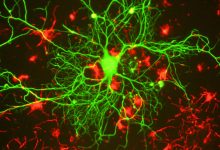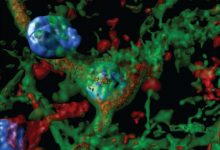
In a new study done by UT Southwestern’s O’Donnell Brain Institute, the scientist finds a genetic trigger that may improve the brain’s ability to heal from a range of debilitating conditions, from strokes to concussions and spinal cord injuries. They also demonstrated that if gene present inside astrocyte is turned on by using gene therapy technique then it can turn in a smaller scar and – potentially – a more effective recovery from injury. Gene therapy is a technique that uses genes to treat or prevent disease by therapeutic delivery of nucleic acid into a patient’s cells as a drug.
Astrocytes are the characteristic star-shaped glial cells in the brain and spinal cord. Previous studies already indicate that astrocytes can help the brain and spinal cord to recover from injury, but the mechanism of triggering which activates these cells was not completely understood.
During their study, scientist found that there is a gene called gene present in astrocytes which are when turned on prompt a recovery response called astrogliosis, in which these star-shaped cells proliferate around injured neurons and form a scar.
Dr. Goldberg said. “Now we’ll be able to look at whether turning on the switch we identified can help in the healing process.”
In the laboratory, researchers performed their study in mice and deleted the LZK gene in astrocytes from one group of injured mice and observed that on deleting this specific gene, the cell’s injury response got decreased and resulted in a larger wound on the spinal cord. After that, they overexpressed the gene in other injured mice and found that this stimulated the cells’ injury response and resulted in a smaller scar. Researchers arrived at the conclusion that overexpression of LZK gene in mice activated the astrocytes, confirming LZK as a trigger for astrogliosis.
Dr. Goldberg said a smaller scar likely aids the healing process by isolating the injured neurons, similar to how isolating a spreading infection can improve recovery. “But we don’t know under what circumstances this hypothesis is true because until now we didn’t have an easy way to turn the astrocyte reactivity on and off,” he said.
In the light of this research, scientists proposed a new approach of treating brain and spinal cord injury but also see a need to analyze whether a compact scar tissue indeed improves recovery and how this process affects the neurons’ ability to reform connections with each other.
According to the author, the next stage of the research will be to examine the effects of astrogliosis in stroke and spinal cord injuries. The researchers will determine whether turning up LZK in mice in advance of an injury affects its severity. They will then measure how the formation of the compact scar helps or hinders recovery.
“It has been a big mystery whether increasing astrocyte reactivity would be beneficial,” said Dr. Meifan Amy Chen, the study’s lead author and Instructor of Neurology at the Peter O’Donnell Jr. Brain Institute. “The discovery of LZK as an on the switch now offers a molecular tool to answer this question.”






